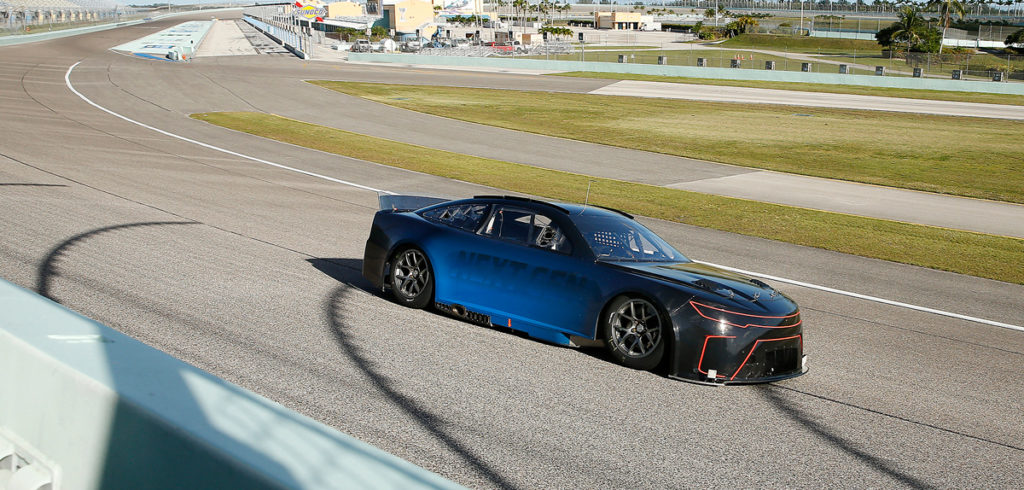NASCAR has revealed plans to intensify the testing schedule for its next-gen Cup car in 2020, ahead of the switch for the 2021 season. The car, officially known as Generation 7, could make its debut in the 2021 Daytona 500, the sport’s season-opening and blue riband event.
NASCAR has been working on the next-gen throughout 2019 in conjunction with its three competing manufacturers, Chevrolet, Ford and Toyota. Prime aims include lowering the costs of competing in the sport and making the race cars more relevant to road equivalents – an intention to “put the stock back in stock cars” has often been touted, with NASCAR known to be keen to attract a fourth manufacturer back into the sport.
Few technical details of the car have so far been released, though three on-track tests with the one prototype – non-manufacturer-specific body specification – have revealed some potential details.
Pictures released following the most recent test at Homestead-Miami Speedway on 15-16 January showed that the car was clearly running with independent rear suspension, a significant change from current NASCAR specification.
Eric Jones, who drove the car at Homestead, also revealed that he was using a sequential gearbox, another seismic change from the H-pattern transmission shift that has always been the NASCAR staple.
NASCAR has confirmed that the next-gen car will see a switch from 15in to 18in wheel sizes. More significantly it has been stated that the sport is looking at lighter, more cost-effective engine options for 2021. While no details have been released, there have been suggestions that these powertrains could include hybrid elements.
The test schedule for the car through 2020 will see six more outings in the first half of the season, starting at Auto Club Speedway in Fontana, California, on 2-3 March. A second car will be completed that month to allow aerodynamic analysis of the design when running in traffic.
In the second half of the season the testing schedule will intensify, the program involving tests for tire supplier Goodyear, ‘organizational tests’ with each organization running a single car, and finally open tests involving all Cup teams running the new car.



